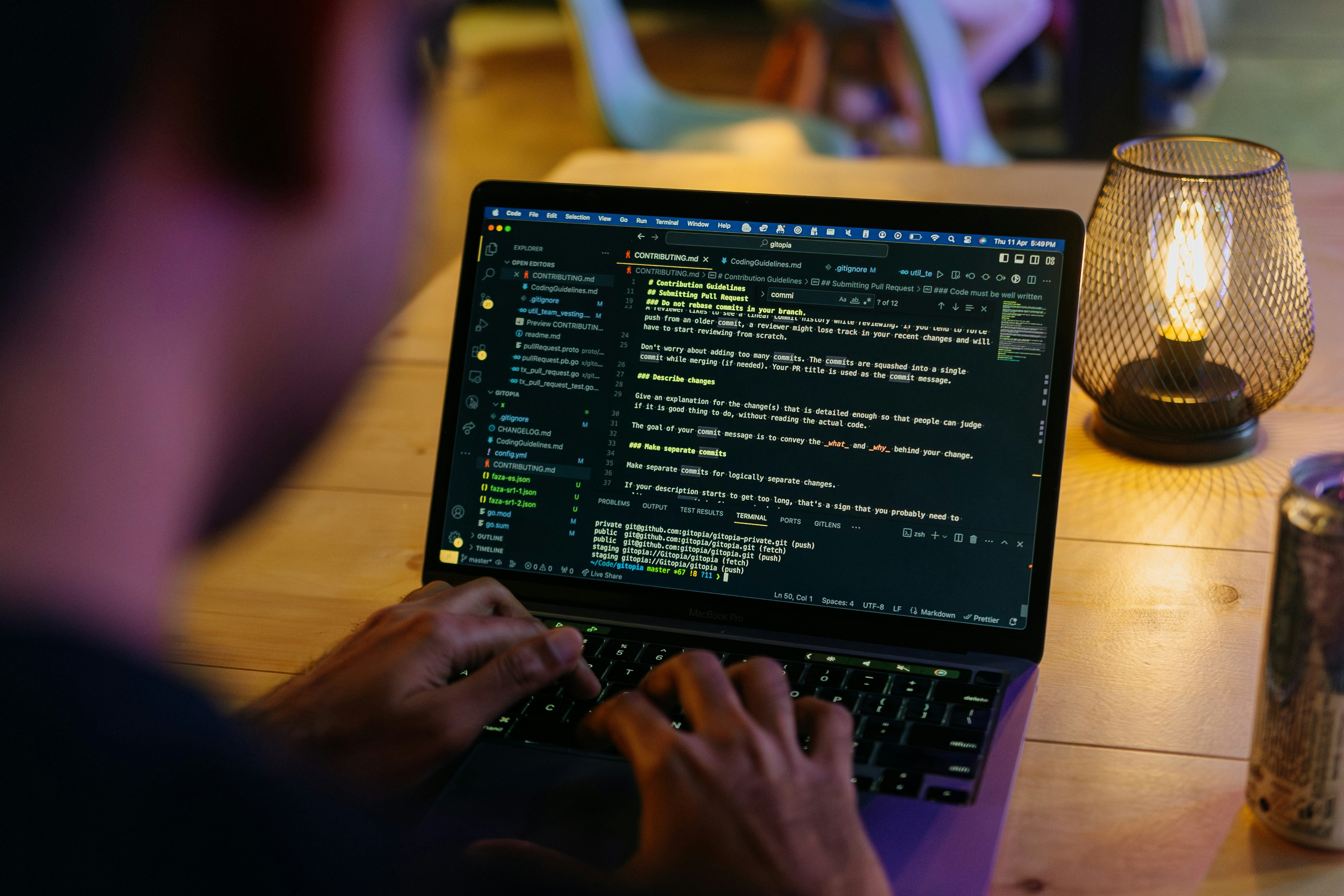


+13.000 top-tier remote devs

Payroll & Compliance

Backlog Management

The digital threat landscape has entered a new era. Cyberattacks are becoming faster, smarter, and more targeted, challenging even the most advanced security systems. Traditional defenses — once built on manual detection and static rules — can no longer keep up. To stay resilient, organizations are turning to a new strategic ally: Artificial Intelligence.
As Microsoft highlights, AI in cyber defense is not just an emerging trend but a structural transformation. It reshapes how threats are detected, analyzed, and prevented — shifting cybersecurity from reactive defense to proactive anticipation. The role of AI in cybersecurity extends beyond automation: it enables systems to learn from every incident, identify unseen patterns, and respond with precision at machine speed.
As global reliance on digital infrastructure deepens, the impact of AI-powered threat detection grows across every sector — from finance and healthcare to government and industry. Its promise lies in the benefits of AI in cybersecurity: greater speed, accuracy, and adaptability in protecting data and critical systems. Yet, with this technological leap come new challenges around ethics, transparency, and control that demand human judgment and accountability.
The role of AI in cybersecurity has evolved from simple automation to strategic defense. AI in cyber defense now functions as the brain of digital protection—analyzing, learning, and adapting faster than any human system could. By integrating machine learning into security operations, organizations now achieve adaptive, self-improving defense systems capable of learning from every incident, as IBM explains in its AI cybersecurity insights.
The use of AI in Cyber defense enables automated analysis of millions of data points per second, identifying anomalies long before breaches occur. Intelligent systems can correlate alerts across endpoints, networks, and cloud environments, drastically reducing detection and response times.
By leveraging AI-powered threat detection tools such as SIEM, teams achieve lower Mean Time to Detect (MTTD) and Mean Time to Respond (MTTR), ensuring business continuity.
AI’s predictive capabilities give cybersecurity teams a forward-looking advantage. Predictive models forecast potential vulnerabilities, rank risks, and recommend preventative measures. This proactive approach marks a fundamental impact of AI in cybersecurity—shifting from reaction to anticipation, minimizing operational disruption and financial loss.
The impact of AI in cyber defense is most visible in how it revolutionizes threat intelligence. AI empowers analysts to process massive, unstructured datasets and uncover patterns invisible to traditional tools. This allows organizations to transition from data overload to actionable insight.
AI and machine learning algorithms for security amplify the efficiency of modern threat intelligence platforms. They scan and contextualize information from dark web forums, social media chatter, and malware databases, identifying trends that indicate early stages of attacks. By integrating NLP, these systems understand human language—decoding attacker conversations or leaked credentials—turning unstructured chaos into structured intelligence.
The expansion of cloud and IoT ecosystems has magnified exposure to risk. Autonomous cybersecurity systems ensures seamless visibility across distributed networks, identifying unusual device behavior or suspicious network flows. This creates an end-to-end protection layer essential for hybrid infrastructures.
Generative AI in cybersecurity acts as both a weapon and a shield. It simulates realistic attack scenarios, helps detect vulnerabilities faster, and automates forensic reporting—while its dual-use nature also enables cybercriminals to craft deepfakes, phishing campaigns, and self-evolving malware.
Generative AI enhances AI-powered threat detection by simulating realistic attack scenarios that allow teams to test their defense posture before real incidents occur. It helps detect vulnerabilities faster, automates technical documentation, and supports forensic analysis through data visualization and report generation.
By generating synthetic data and simulating complex threats, generative AI strengthens detection models, making defenses adaptive rather than reactive. As organizations integrate these tools into security workflows, the use of generative AI in cybersecurity becomes a catalyst for efficiency, speed, and deeper situational awareness.
However, generative AI also opens new avenues for cybercriminals. Threat actors now use it to craft realistic phishing campaigns, deepfake identities, and self-evolving malware that can bypass traditional filters. This capability blurs the line between human and machine deception, forcing defenders to think several steps ahead.
The disadvantages of AI in cybersecurity emerge here: as systems grow smarter, so do attackers. The next challenge is to build early-detection and monitoring frameworks capable of spotting AI-generated threats before they scale.
The benefits of AI in cyber defense extend beyond automation—they redefine the speed, scale, and intelligence of defense systems. Organizations now rely on AI not only to detect and respond to threats, but also to optimize operations and allocate human expertise efficiently.
AI-powered analytics translate complex data into actionable priorities, helping CISOs allocate resources efficiently and strengthen long-term resilience strategies. This accuracy directly translates into better resilience, ensuring that cyber threats are addressed before they escalate.
Rather than replacing people, AI amplifies their capabilities. The concept of “augmented intelligence” merges algorithmic power with human reasoning. Analysts use AI insights to develop long-term strategies, perform root-cause analyses, and forecast emerging risks—turning data into defense and intelligence into prevention.
Despite its promise, the use of AI in cyberdefense brings serious ethical and operational challenges that demand careful oversight and human judgment, as Morgan Stanley warns in its report on the new era of digital defense.
AI systems are only as unbiased as the data they learn from. Skewed or incomplete datasets can lead to misclassifications or missed threats, while excessive reliance on automation may weaken critical human analysis and decision-making.
Continuous data collection raises concerns about surveillance, user consent, and digital sovereignty. Security platforms often process sensitive behavioral and biometric information, making transparent governance and explainable AI (XAI) essential to maintain public trust.
To mitigate these risks, organizations must adopt accountability frameworks, ensure fairness and oversight, and comply with ethical standards that balance innovation with privacy protection. Ultimately, the goal is to build AI-driven defense systems that protect individuals as effectively as they prevent attacks.
The global market offers many AI in cyber defense examples that demonstrate tangible progress across industries and governments alike.
Industry leaders are integrating AI to create self-learning defense ecosystems. IBM applies cognitive models to improve threat interpretation; Microsoft’s Security Copilot accelerates security decisions; and Palo Alto Networks uses AI-driven firewalls that adapt autonomously—showing how AI turns fragmented defenses into cohesive, evolving systems.
These AI in cybersecurity examples reveal how AI transforms fragmented defenses into cohesive, adaptive systems that evolve in real time.
AI has become integral to national defense frameworks, where predictive monitoring safeguards critical infrastructure. Government agencies use AI to trace cyberespionage campaigns, detect state-sponsored threats, and protect public-sector data integrity—reinforcing how the impact of AI in cybersecurity extends beyond corporate environments into geopolitical stability.
The AI in cyber defense market is expanding rapidly as organizations recognize that intelligent automation is essential for survival in a threat-saturated world.
Driven by enterprise cloud adoption and the convergence of AI with big data, the market is expected to exceed $100 billion by 2030. This surge reflects not only rising demand, but also trust in AI’s capacity to reshape risk management. Venture capital is fueling startups focused on adaptive defense, predictive analytics, and AI-governed compliance—defining the next competitive edge in security innovation.
The next leap in cybersecurity will merge AI with quantum computing. Post-quantum algorithms trained through AI will defend against decryption attempts once thought impossible. These hybrid models promise to make autonomous cybersecurity systems the foundation of unbreakable digital ecosystems—resilient, scalable, and future-proof.
The relationship between cybersecurity in AI and AI in cyber defense is now reciprocal.As AI protects digital systems, cybersecurity must also safeguard the AI models themselves.
Hackers are targeting AI systems directly—feeding adversarial data to corrupt model outputs and bypass detection layers. These attacks expose vulnerabilities in training pipelines, where even small manipulations can compromise entire algorithms.
To prevent these risks, organizations are developing end-to-end AI protection frameworks that include encrypted data pipelines, model validation, and continuous auditing. This ensures that the very intelligence defending enterprises remains trustworthy, accurate, and uncompromised—closing the loop between AI innovation and digital defense.
Cyber threats are evolving faster than ever—and so must our defenses. In this new era, cybersecurity evolves through the synergy of human insight and intelligent automation, where the challenge is not adopting AI but ensuring it serves transparency, accountability, and resilience. From predictive analytics to real-time incident response, AI empowers organizations to anticipate, detect, and neutralize attacks at machine speed.
Yet, with great power comes responsibility. Balancing innovation with ethics, and automation with human judgment, will define the next chapter in digital defense. As companies race to stay ahead of increasingly sophisticated cybercriminals, AI becomes the key to resilience, precision, and trust.
At the core of this transformation, a partner like The Flock enable global businesses to build and scale AI-driven cybersecurity solutions—combining validated Latin American talent with managed software teams to reinforce digital infrastructures with both human intelligence and technological precision. In the years ahead, the true strength of AI in cybersecurity will not lie in its speed or scale—but in how responsibly we choose to use it
1. What is the role of AI in cyber defense?
Artificial intelligence automates threat detection, analyzes anomalies, and predicts attacks by learning from data patterns — helping teams respond faster and smarter.
2. How can generative AI enhance security operations?
It can simulate attack scenarios, test defenses, and automate patching — but also pose new risks like AI-powered phishing or deepfake-based attacks.
3. What are the main benefits of AI-powered threat detection?
Greater speed, scalability, and precision in identifying and mitigating cyber risks, as well as valuable support for human analysts through real-time insights.
4. What are the limitations of machine learning algorithms for security?
These systems can inherit bias, misread data, or be tricked by adversarial inputs — reminding us that automation still requires human oversight.
5. What are some examples of autonomous cybersecurity systems?
Platforms like IBM Watson for Cybersecurity, Microsoft Security Copilot, and Palo Alto Networks’ AI-driven defenses use automation to predict, prevent, and neutralize attacks.
6. What is the future of AI in cyber defense?
Integration with quantum computing, ethical AI frameworks, and adaptive autonomous cybersecurity systems capable of self-learning and continuous evolution.

+13.000 top-tier remote devs

Payroll & Compliance

Backlog Management